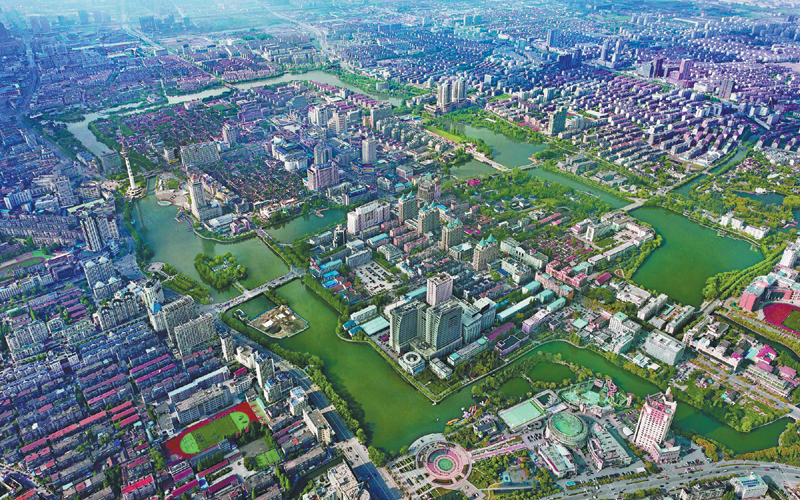Access to and price of healthcare improve after five years of work, An Baijie, Guo Liang and Chen Ke report.
Medical costs in rural areas of Nantong have decreased by an average of 20 to 30 percent after the local government brought in medical reform measures.
Statistics released by the city’s health bureau show that during the past five years the average cost of outpatient services dropped by 31.2 percent in township hospitals of Nantong, while hospitalization costs were cut by 22.5 percent for each patient in rural clinics.
The medical reform, which started five years ago in Nantong, aims to reduce medical costs for local residents, especially those living in remote rural areas, through measures including promoting health insurance and curbing medicine prices.
Last year, Mao Guopeng, a resident from Xuehong village in Nantong’s Rugao city, had kidney surgery, which he said cost about 78,000 yuan ($12,564), with 52,600 yuan of that covered by rural health insurance.
“The civil servant authorities have also donated 15,200 yuan to me, and I only have to pay 10,100 yuan of the total 78,000 yuan cost,” he said.
Wang Xiaomin, director of the Nantong Health and Family Planning Commission, said that the public had been dissatisfied with medical services for years because of high prices.
“The problems are caused by the imbalance in the distribution of medical resources, the imperfections of the health insurance system, the profit-driving practice of State-owned hospitals and the high prices of medicines,” she said.

According to the commission, more than 99 percent of Nantong’s rural residents are covered by the rural medical insurance system. By the end of June, the insurance system had paid out 101.08 million yuan for rural patients’ medical expenses, with an average of 6,100 yuan for each patient.
To provide better medical services, Nantong’s health authorities invested more than 38.7 million yuan to buy equipment including X-ray machines for township hospitals. Doctors from large urban hospitals are also encouraged to go to grassroots clinics to provide medical treatment.
Statistics from the Nantong Health and Family Planning Commission show that all of the city’s 1,540 villages now have their own clinics.
Nantong’s health authorities have enhanced cooperation with their counterparts in Shanghai, where hospitals provide more specialized medical services. All of the city government-managed hospitals have established cooperative ties with hospitals in Shanghai.
The health authorities have attached great importance to disease prevention in recent years, offering more than 10,900 health lectures to the public. All of the city’s newborn babies have vaccine records on file.
Nantong’s health authorities encouraged doctors to commute using public transport, so more parking spaces can be offered to patients.
According to Wang, the director of the commission, the Nantong city government will build 1,600 parking lots at the Affiliated Hospital of Nantong University, the city’s best hospital, which currently has 750 parking lots.
“We should address the problem of patients having difficulty parking cars to make it more convenient for patients,” she said.
The efforts made by Nantong’s health authorities are in line with the requirements of China’s central government, which has focused on medical reform in recent years.
In May, the State Council, China’s Cabinet, issued a guideline to push forward reform in more public hospitals amid a broader overhaul of its healthcare system.
China launched a pilot medical reform on public hospitals in 17 cities in 2010, and the guideline stipulates the reform should cover all of the country’s 6,800 public hospitals by 2017.
The reform aims to change public hospitals’ reliance on medicine sales to supplement their income. Public hospitals should establish a reasonable drug pricing system and retune recruitment and salary policies, said the guideline.
Health insurance should cover most of the medical expenditure, while out-of-pocket money, the private bills paid by each patient, should be lower than 30 percent by 2017, according to the reform.
The wider plan is to establish a modern hospital management system, eliminating drug price-added profits and standardizing referral procedures.
Public hospitals should be operated for the public good, instead of seeking lucrative gains, and the service should be accessible, equal and efficient, according to the guideline.
The guideline also said social medical care should be encouraged through improved policies and strengthened supervision. The guideline urges reform at grassroots-level and the nurturing of more capable doctors.
Full-scale reform of the healthcare system began in 2009. Pilot projects for public hospital reform were a priority, along with a basic medical security system, improvement at grassroots level and equal access to basic public health services.
Contact the writers through anbaijie@chinadaily.com.cn
Xinhua contributed to this story.
